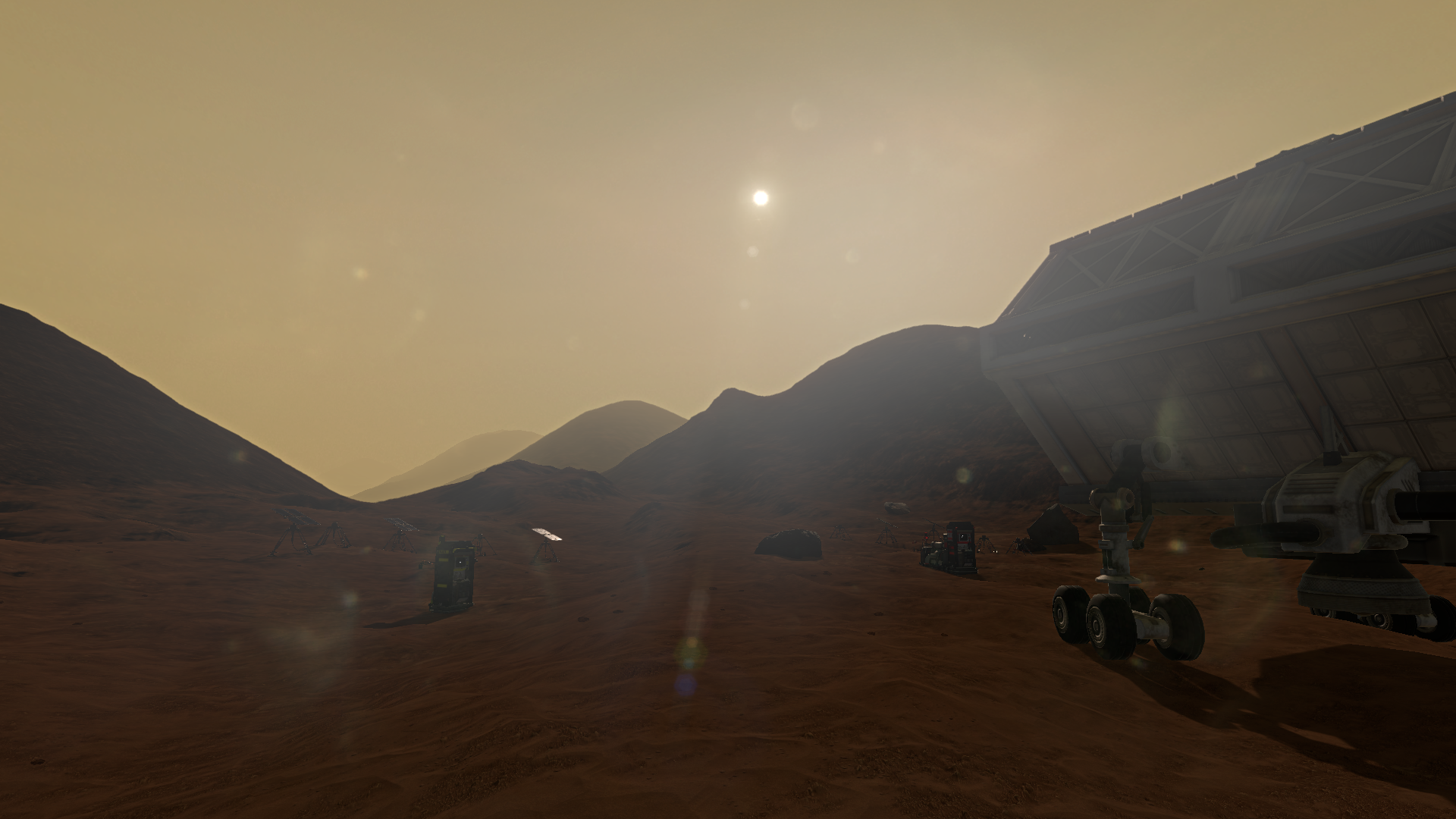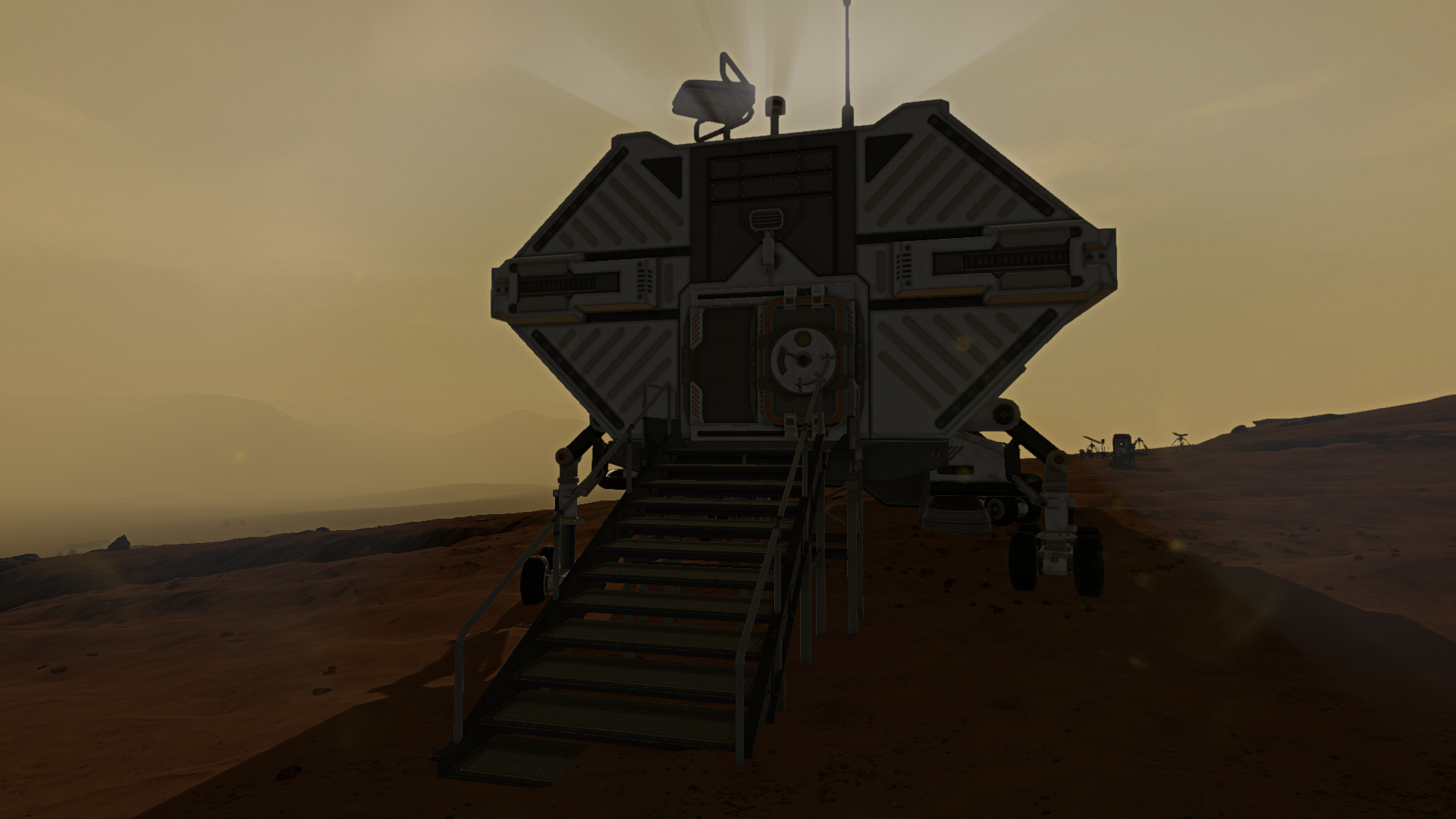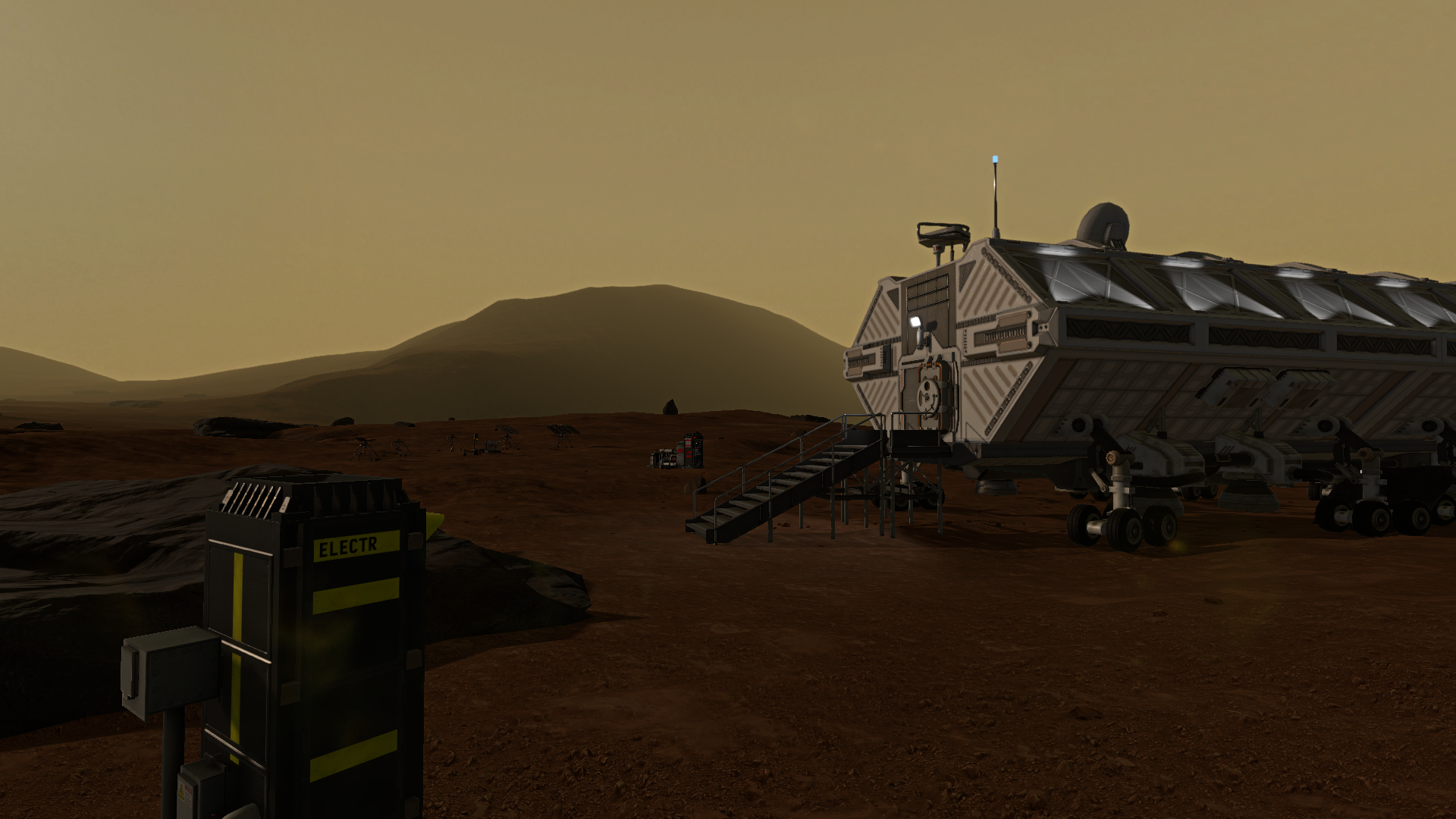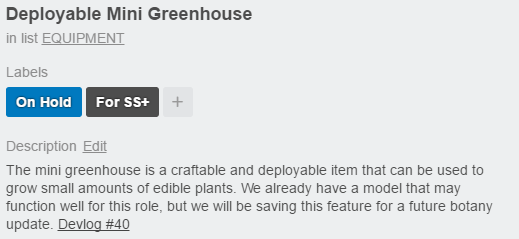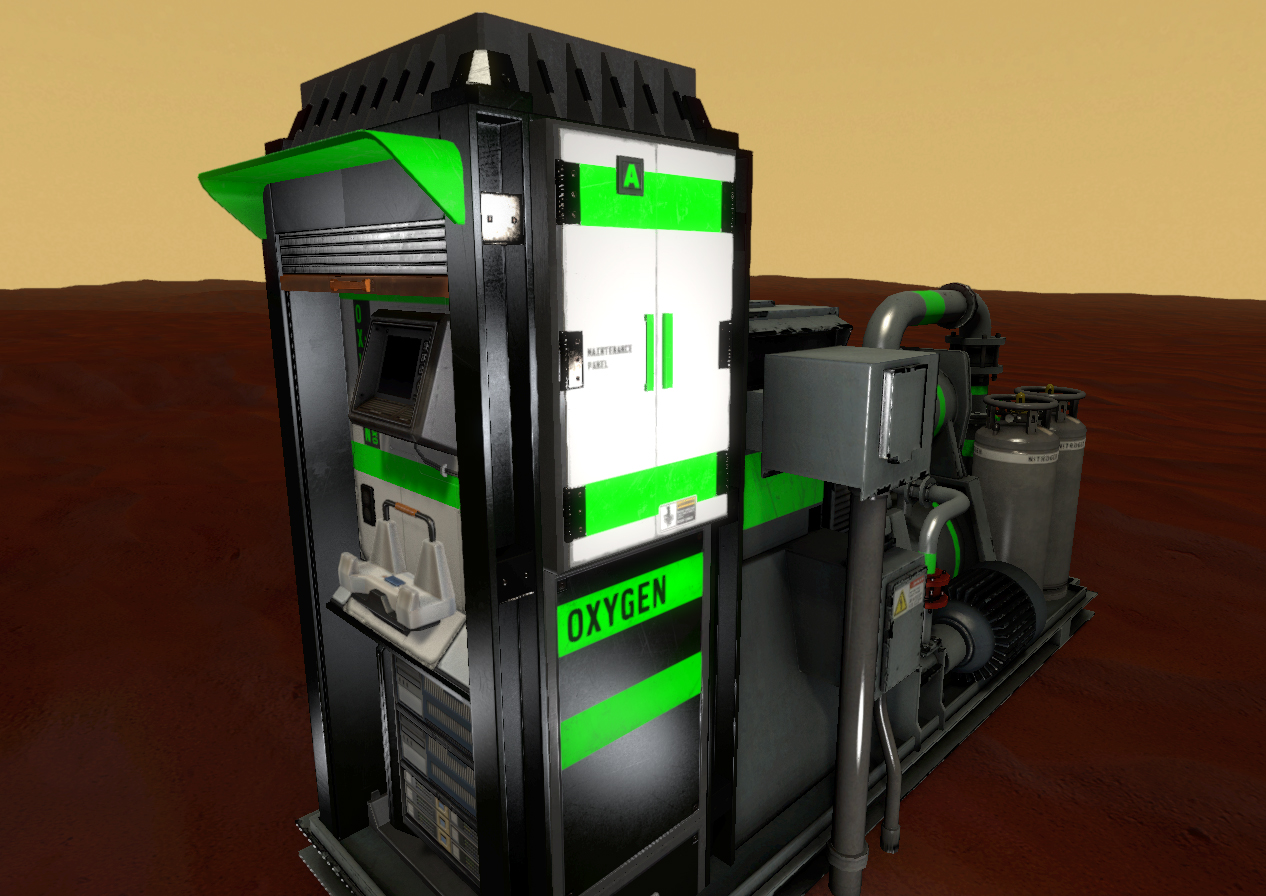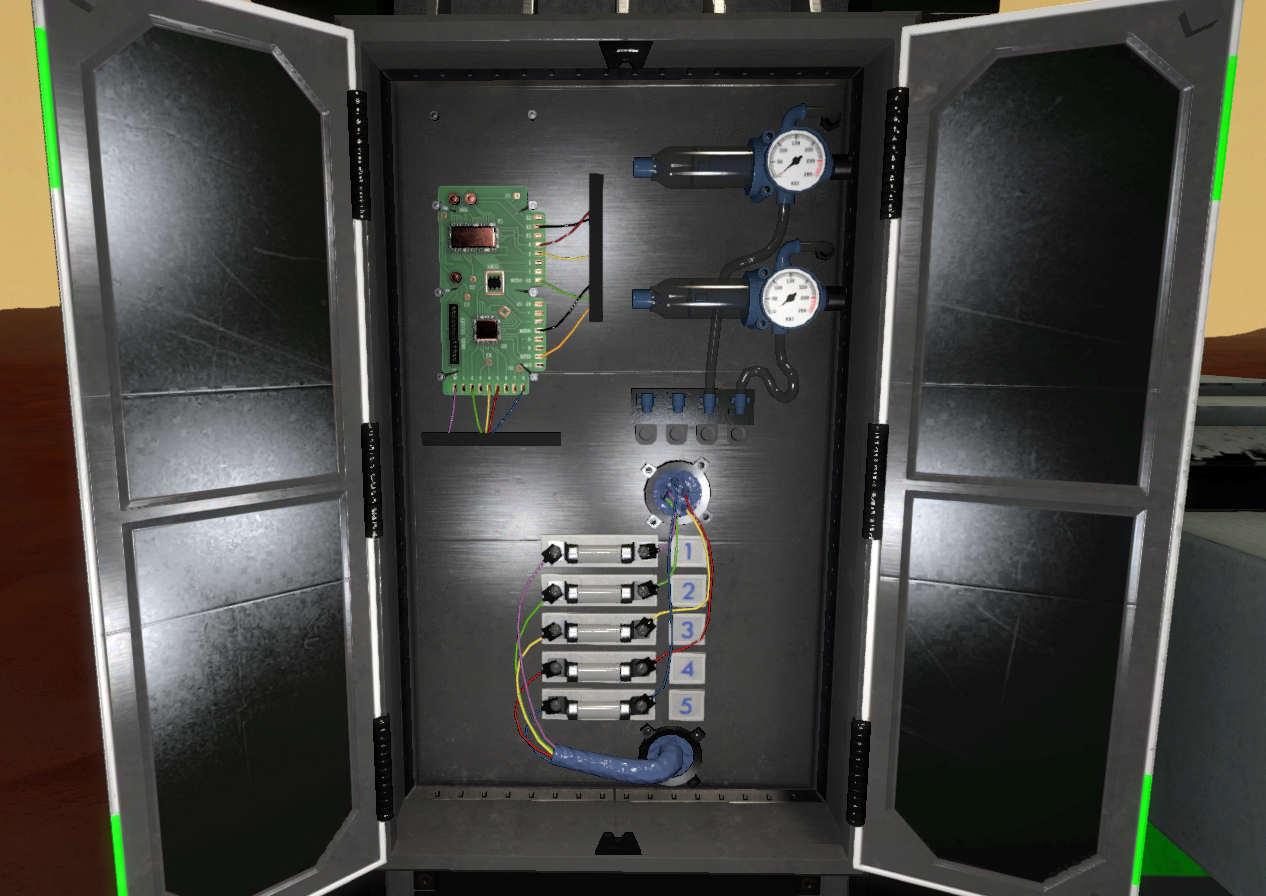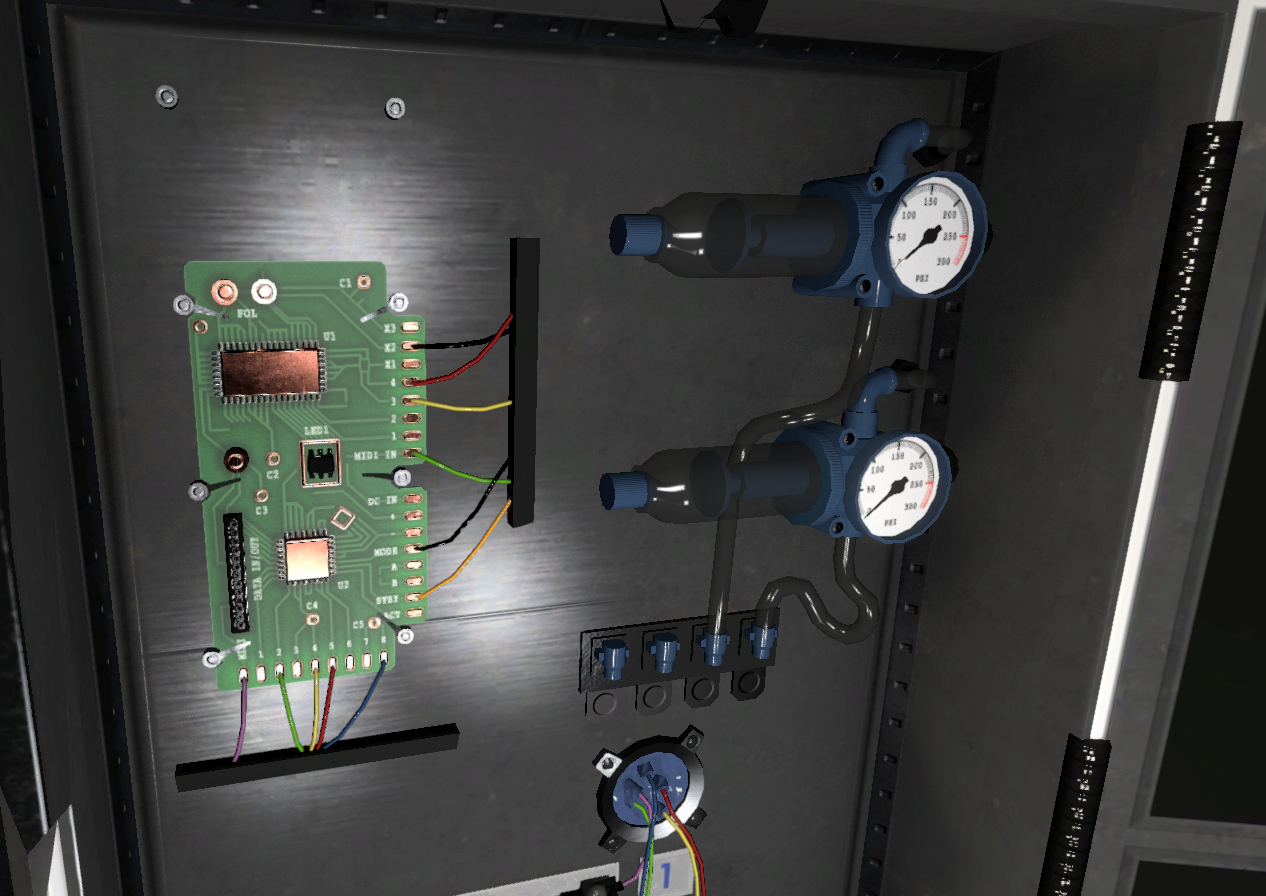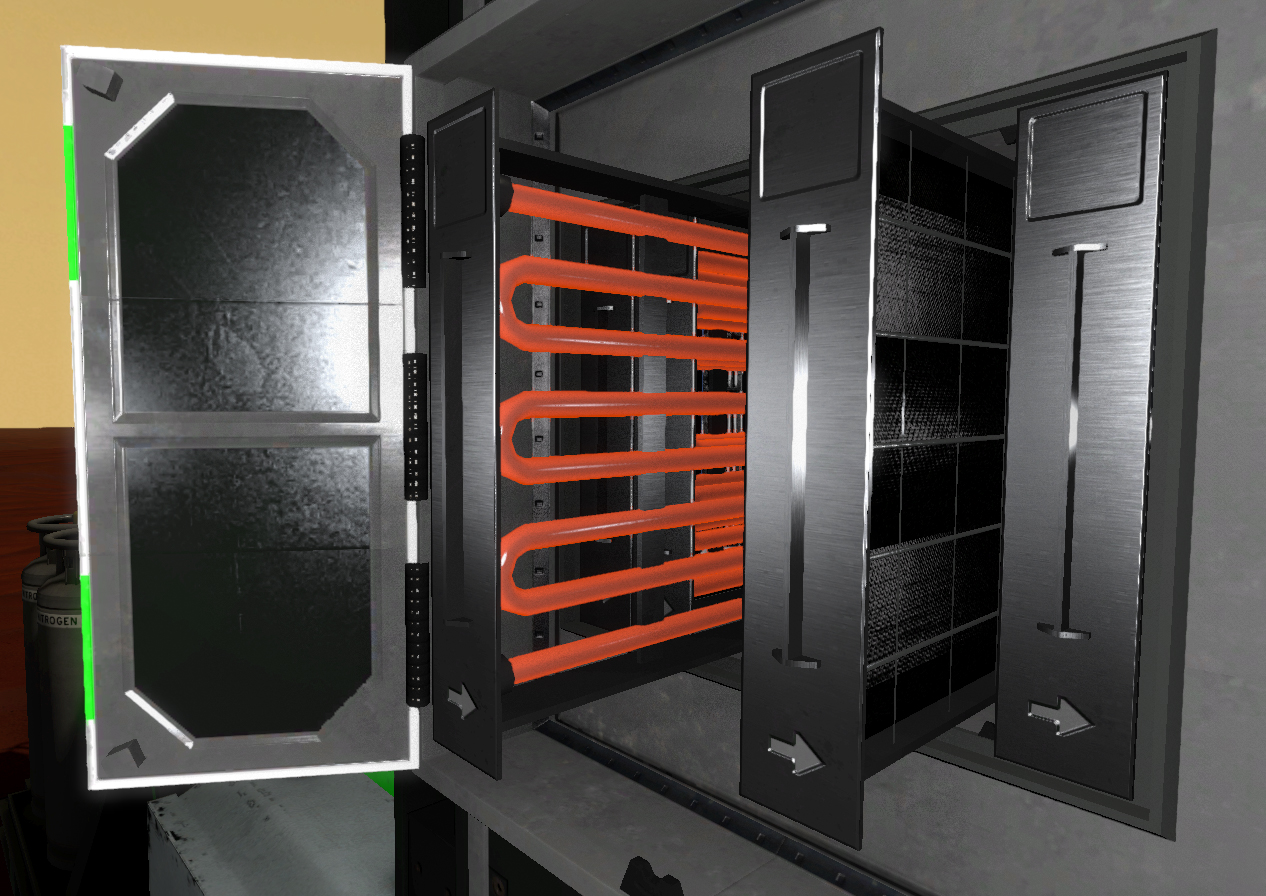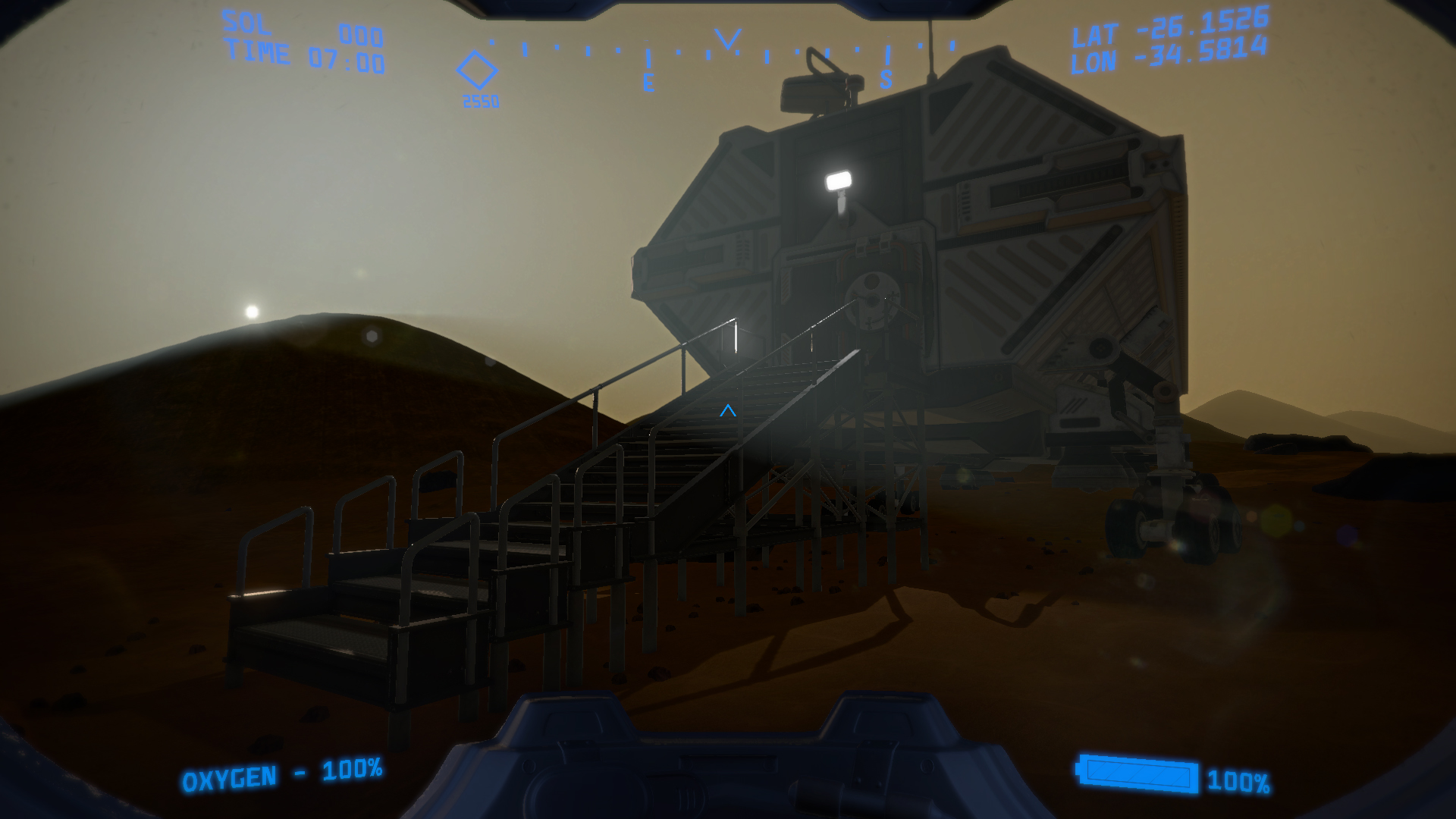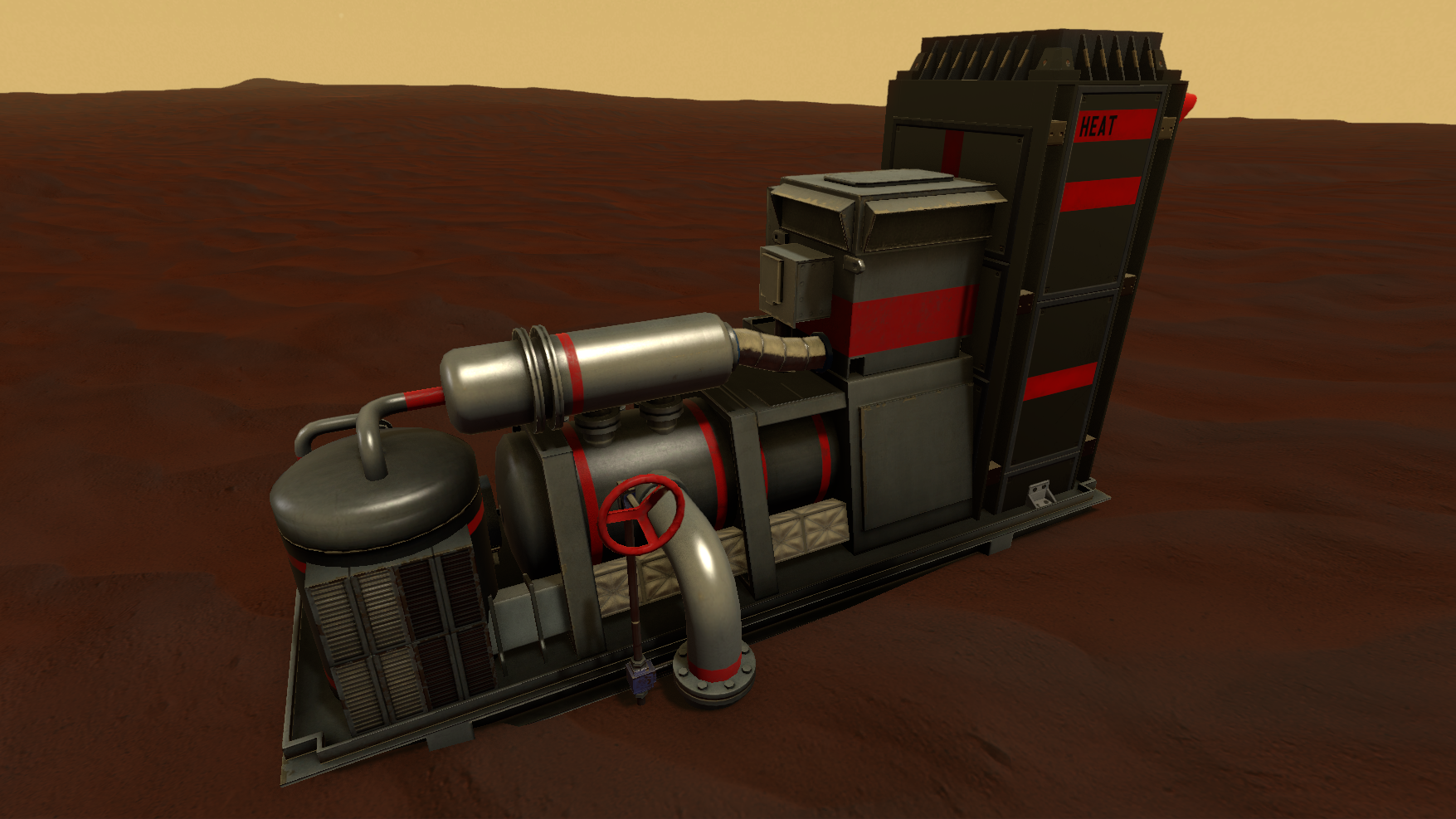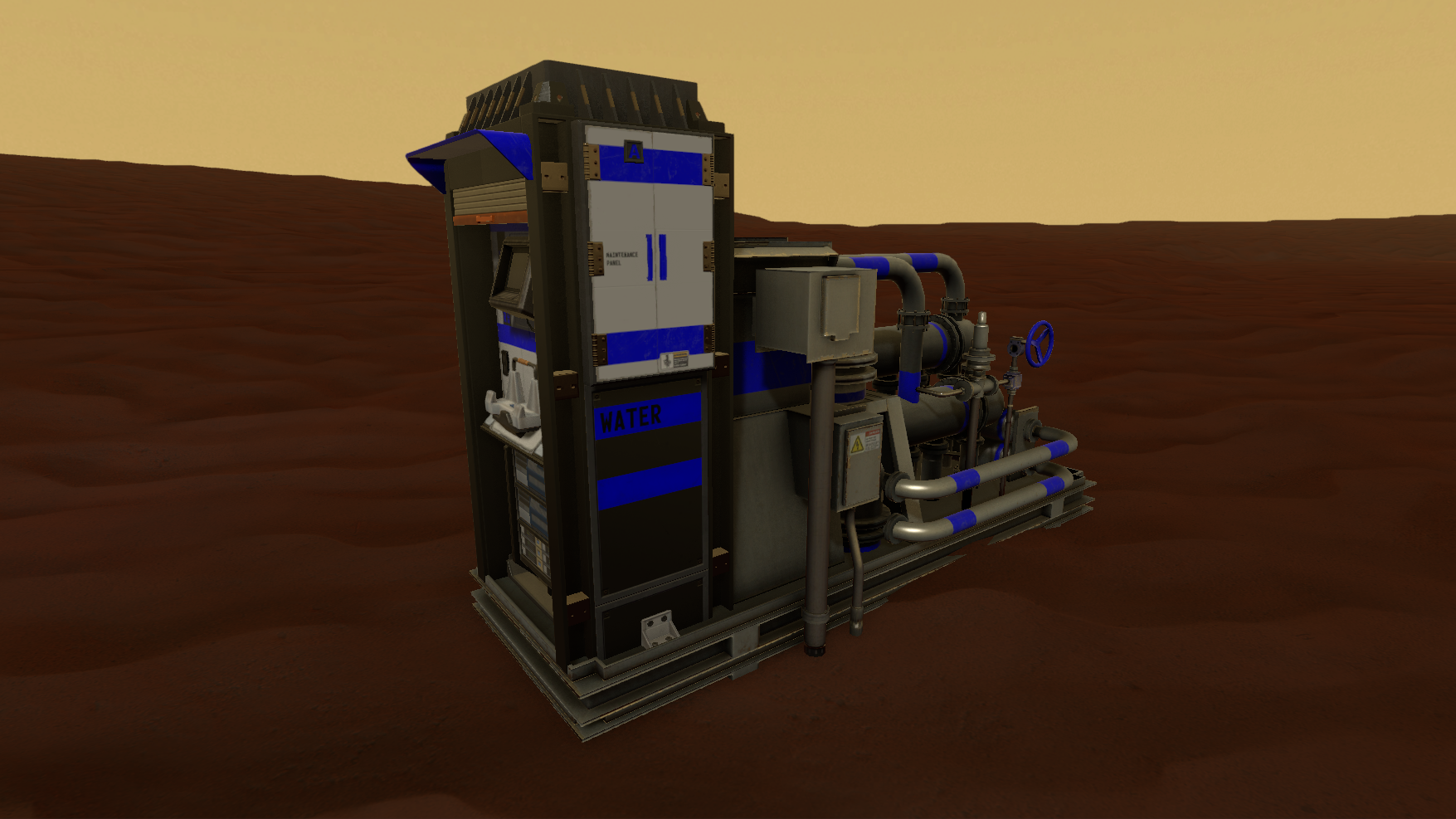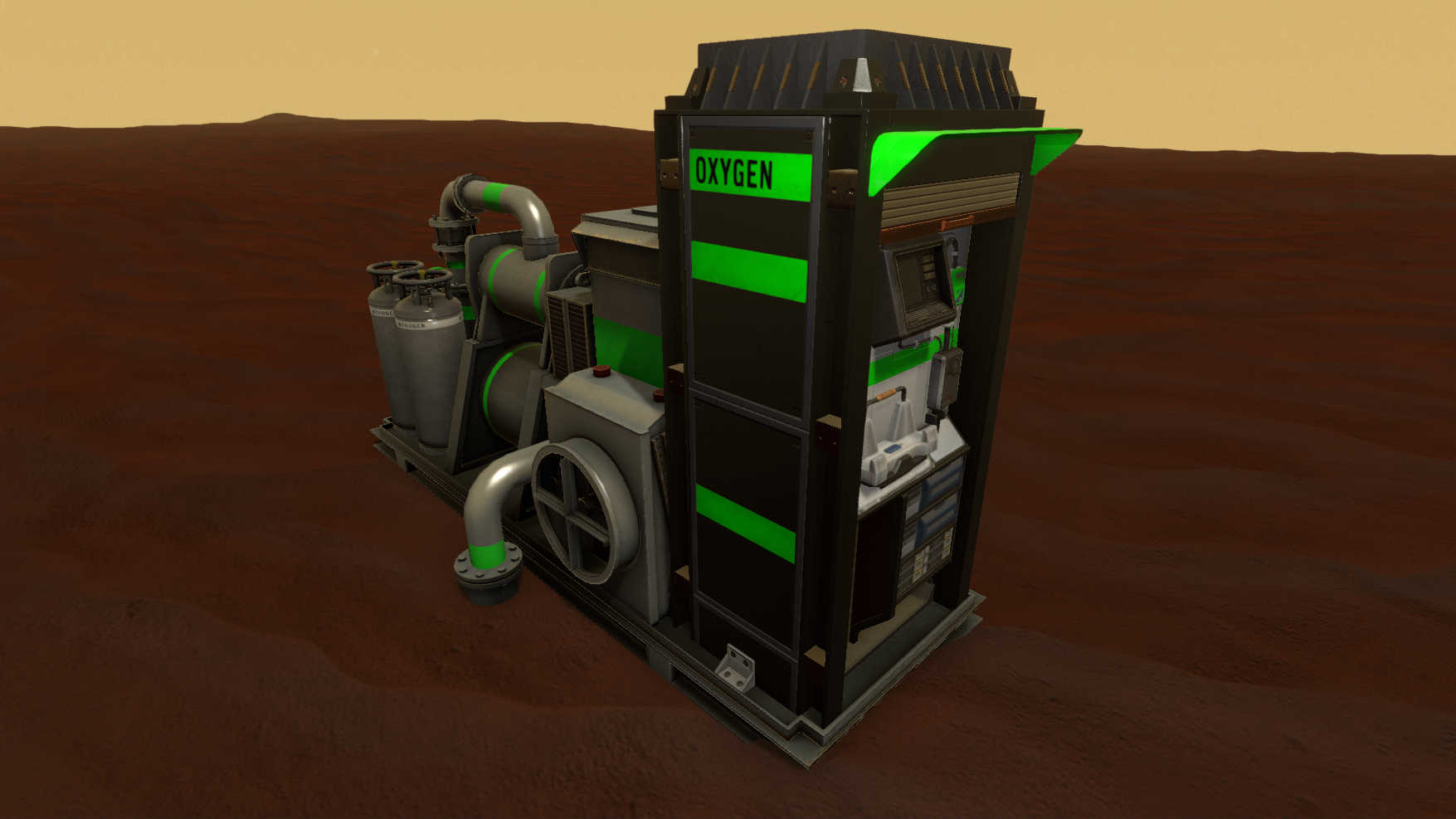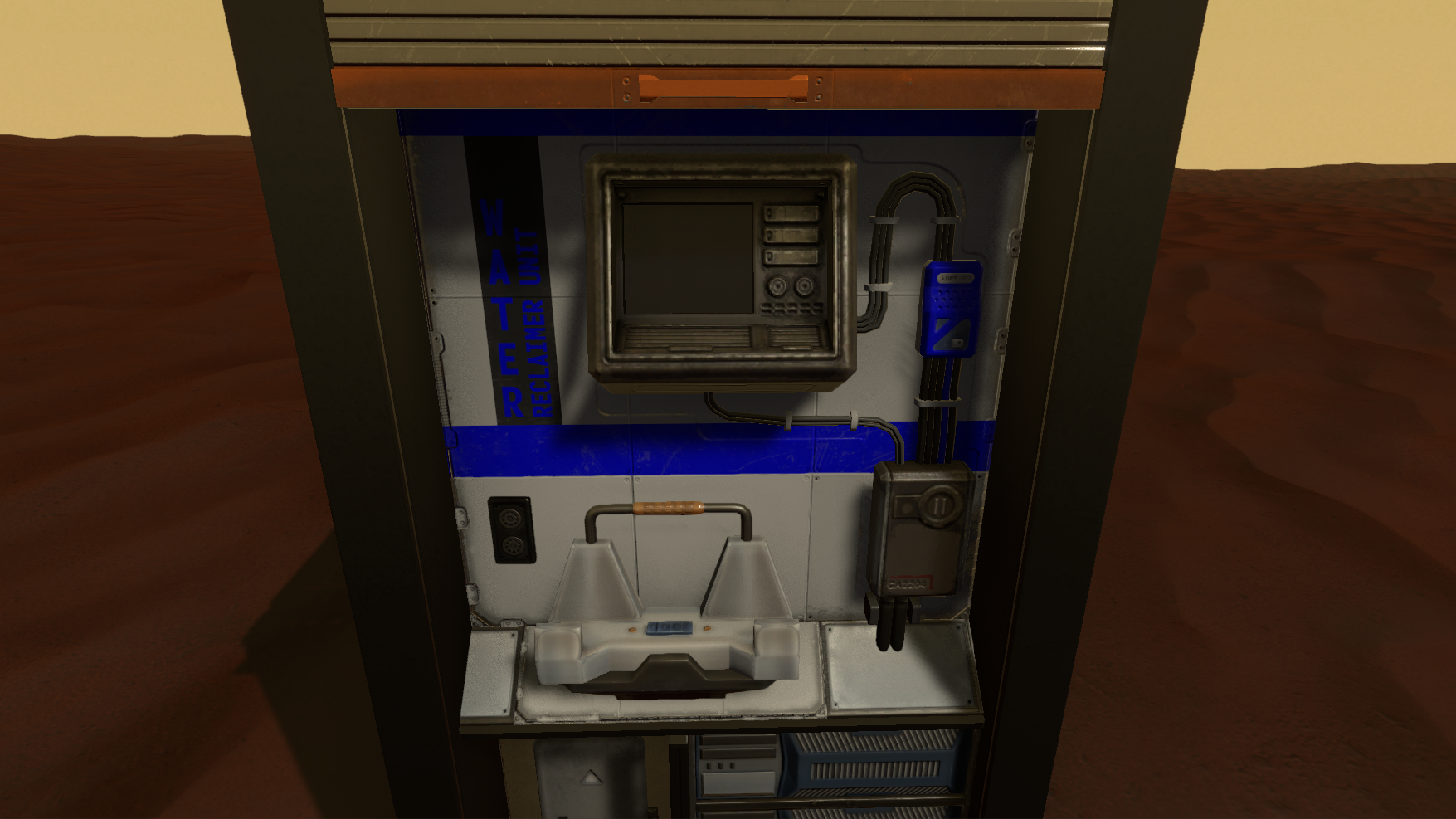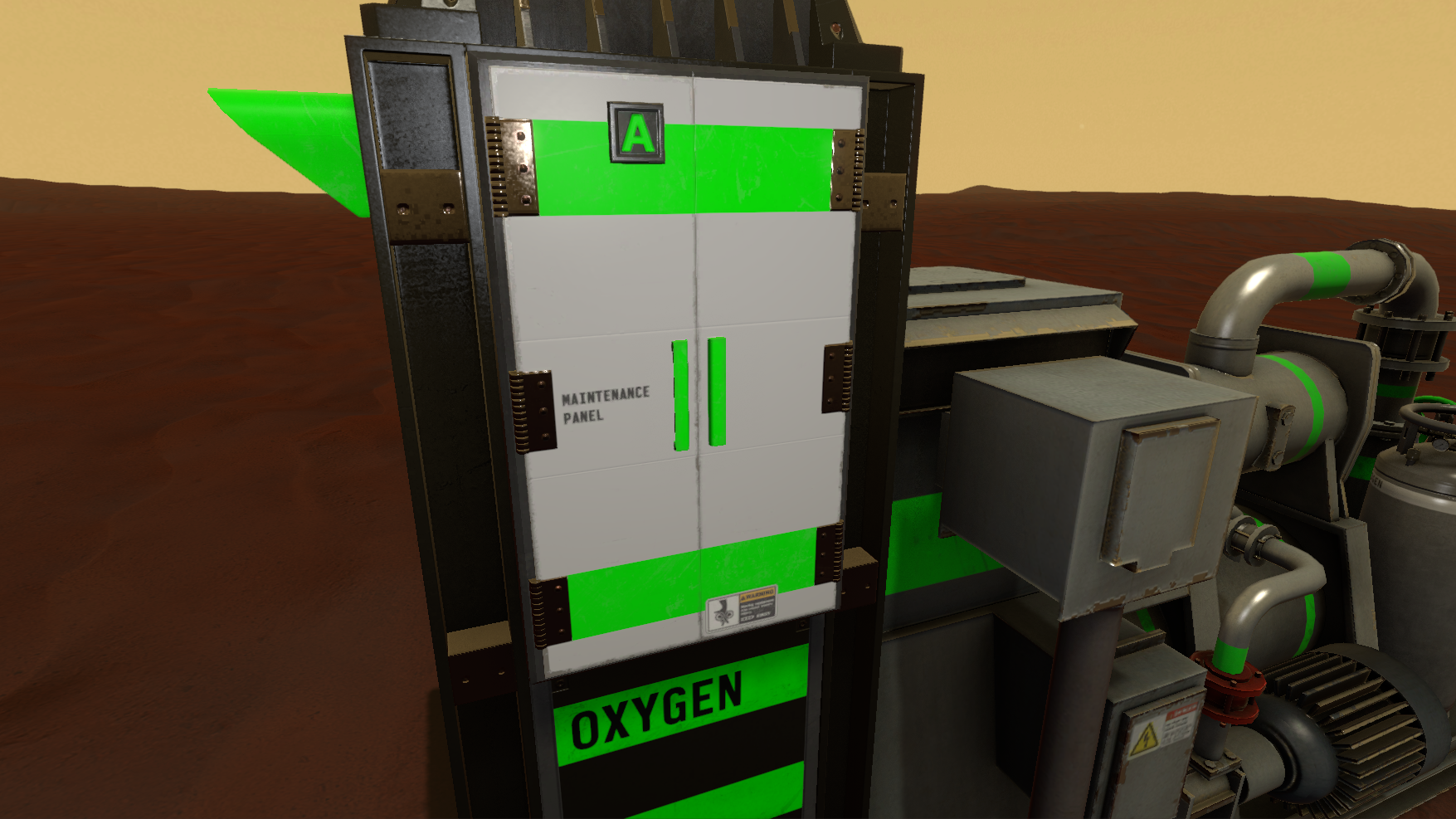I don't really have a good intro for this month, so... Inventory icons! They're pretty cool.
I've been staring at placeholder numbers on the inventory screen for so long, so it's actually really exciting to finally have some finished art in the UI. The above images show the current 25 completed icons, but we should have roughly 100 total items in the first Survival Sandbox release.
I've also been working on several more integrated features between our habitats and their attached exterior modules. A simple addition of a new habitat status console in the airlock will allow you to quickly check all of your life support systems at a glance.
This will help you to make a game plan before you decide to exit the habitat for an EVA. Keeping tabs on your oxygen, water reserves, power and heat status will be very important.
As you can see above, this is a habitat that was just recently brought back online. Power is on and your reserse suit battery is being charged. The airlock is currently depressurized, but the interior temp is quite low still since the heater was just turned on, so it's probably best to let it get up to a comfortable temperature before entering. Most importantly, your water reclaimer seems to be offline. In this scenario all of the modules have been turned on, but it seems like there must be a component failure in the water reclaimer preventing it from collecting water. Which would be bad enough on its own, but unfortunately the reoxygenator also requires water to produce oxygen and with the water reserves empty it can't do its job. So you can see how this screen will be very helpful in evaluating any issues that might arise. The next step for our astronaut in this case would be to go on an EVA with some carbon filters, hoses, fuses, and maybe a circuit board in order to repair any component failures in the water reclaimer.
This kind of situation might be exactly what you face after finding your first habitat to take shelter in after starting a new Survival Sandbox playthrough. But before you get to your randomly selected starting habitat, you will spawn at a randomly selected landing site in an emergency landing pod. Eight of the 9 total habitats are possible starting habitats and each habitat currently has two possible landing sites which makes for a total of 16 possible starting positions for any one playthrough.
One of several possible emergency landing sites where you can start your playthrough...
A while back I showed some of our new rock and cliff models that I will be using to spruce up the landscape a bit and I've been slowly adding many unique formations to the terrain. Below are a collection of screenshots showing the new level of terrain detail with these added models.
Alright, that's it for the devlog this month. There's more that has been completed, but not much that would be fascinating to share right now. So back to work!











